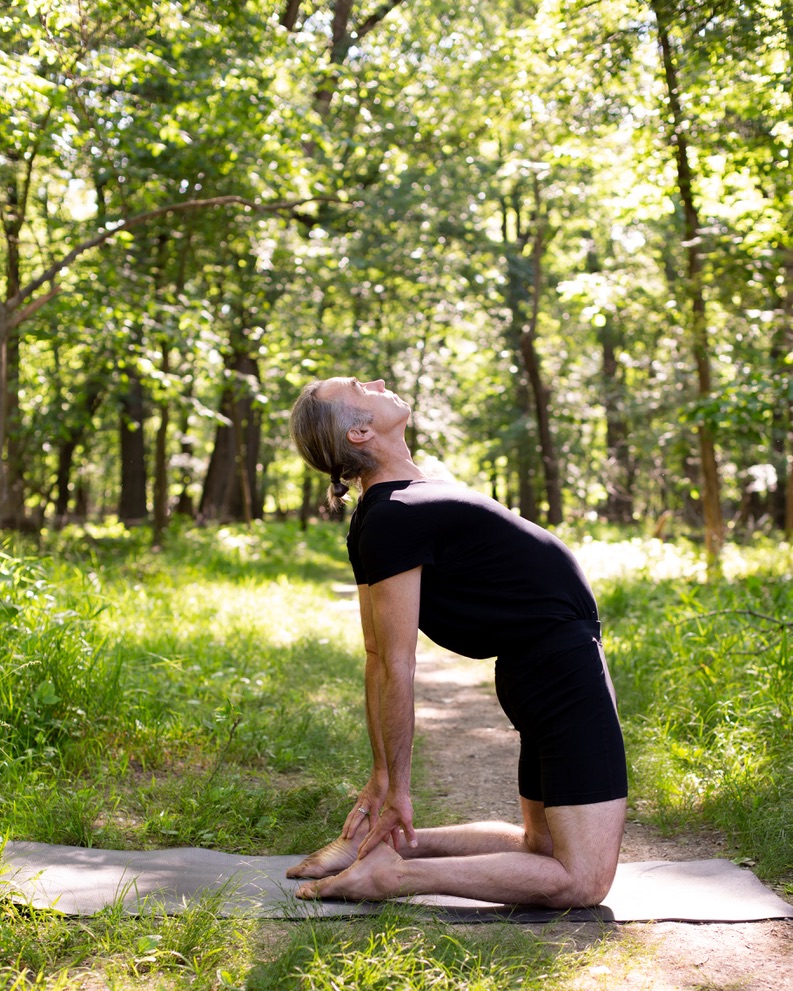When I was in 8th grade, my dad handed me a pair of these.

Well not these, exactly. Mine were way weirder looking. Mine were more like a plastic platform that sat on the bridge of my nose and strapped around the back of my head–sort of a cross between a piece of hospital equipment and a push up bra for an enormous Barbie doll.
What are they? Oh. They’re ball-handling blinders. They train you to keep your head up when you’re dribbling so you can drop sweet dimes.
I wish I could show you the pair I had. I couldn’t even find photos of them on the internet, which makes me wonder if they actually existed. 🤔
They worked though. No doubt. Everytime I’d put the ball between my legs or behind my back, I would try to peek down, but when I had the goggles on, I couldn’t see the ball. I couldn’t see anything, and it helped me break the habit.
Most of us use all sorts of devices to help create boundaries for our behaviors–alarm clocks to limit our sleep, apps that lock us off the internet, fitness classes that charge us even if we don’t show.
We also have apparatuses to boost certain types of behavior–watches that send us digital stickers 🙌 when hit our steps, delicious cookies as a reward for getting through a rough draft, visiting this website to find some inspiration to unroll your mat.
You might say these technologies are as old as the carrot and the stick.
A lot of these methods work, but one limitation of even the best of them is that they usually only work in one specific arena and don’t do much to help us develop the ability to direct our energies in a general.
This means that even if we can rein in a particular behavior here or engender a new positive habit there, we don’t get much help with unexpected distractions.
In order to live a life that’s congruent with our aspirations, we need to develop an internal, holistic approach to stay motivated and reorient us when we start to stray off course. There are probably a number of ways to go about this, but one effective tool we can adopt from the yoga tradition is a sankalpa.
According to Yogapedia, the word sankalpa “comes from the Sanskrit roots san, meaning ‘a connection with the highest truth,” and kalpa, meaning ‘vow.'”1A sankalpa then is a vow to stay connected to the highest truth.
Since sankalpas work from the inside out, we’ll start with the deepest part first.
Sometimes called your bhavana sankalpa, this part of your sankalpa is sometimes translated as your heart’s desire and can be thought of as an affirmation of your true nature.
Because you always are your true nature (even when you forget or can’t feel it) you formulate your bhavana sankalpa as a positive statement in the present tense, eg. “I am pure awareness,” “I am healthy, whole, and free,” or “I am at one with all beings everywhere.”
To find a statement you can connect with, you can begin by probing some of your existing desires. For example, you may have a goal to get promoted at your job, but to discover your bhavana sankalpa, you might question what achieving that goal will satisfy at a deeper level.
Is it acceptance? Empowerment? Security? Feeling valued? Maybe it is all of these things, so when you formulate your bhavana sankalpa, you might use language that includes aspects of your true nature that express that ultimate longing, eg. “I am a creative force, inextricably woven into the fabric universe, at one will all beings everywhere.”
What you come up with doesn’t have to be poetic or lofty, and you should try not to put too much pressure on yourself to lock down something perfect because it will refine itself over time. The important thing is that the words you choose allow you to tap into the felt experience of this inner truth. This is one reason why you might want to let your bhavana sankalpa take shape during savasana, yoga nidra, or other times when you’re in a meditative state and have more access to the wider dimensions of your being.
The second part of a sankalpa can be thought of as an intention. Your intention is something you use in the shorter term to bring you into harmony or manifest specific actions.
If you work with your sankalpa before your yoga practice, for example, you might consider what you need from that particular practice and set an intention to use the practice to bring yourself into balance. You could set an intention to use the practice to find some grounding, explore some type of pain or discomfort, stoke your inner fire, or work with a particular emotion.
You might likewise use your intention to help you fire off that email you’ve been avoiding or call a friend you haven’t talked to in awhile. You could also set an intention to attend to a particular creative project, professional strategy, or some aspect of your personal or home life.

As with your heart’s desire, it’s important to formulate your intentions in positive, declarative statements of fact, eg. “I meditate every afternoon,” “I paint when the appointed time arises,” “I am patient with my kids and provide a sturdy container for their emotions,” or “I listen to what my coworkers have to say and adjust my thinking and actions according to what feels true.”
By structuring your intentions as affirmations and then following through with them, they become welded to an embodied state, which empowers them. This does not happen, however, if you start your intention with words like “I will…” or “I hope to…” or “I want…” Statements like these have the unfortunate effect of reminding us that we are not currently who we want to be and don’t generate that internal momentum.
You may find it helpful to employ your sankalpa as part of a writing process. I write mine down at the end of my journaling practice each morning. For me, it’s a free flowing practice of writing out affirmations of my heart’s desire and intentions for the day. Some statements appear everyday while others come and go. I find that writing it down in this way brings more focused attention to the process, which helps to generate enthusiasm, a positive mindset, and great determination.
Working with a sankalpa is like planting a seed deep in your being. If you nurture it with the practice of gratitude and a feeling of devotion on a regular basis, it will grow and spontaneously blossom throughout your day.
You will even find that when afflictive states appear and start to pull you away from actions that support your values, your sankalpa will arise as an embodied state that will propel you back to your chosen course.
This is radically different from hearing your chastising superego telling you things like, “don’t do that,” or “you should really be doing this instead,” which usually doesn’t alter our behavior and only heaps shame upon us.
The conscious use of external tools that curtail certain behaviors and support others will always have a place, but to bring our thoughts, words, and deeds into harmony with our deepest calling, we cannot exclusively rely on devices, rewards, and blinders to alter our tendencies in a piecemeal fashion.
Instead we need to practice summoning again and again the felt experience of our higher nature so that we learn to flow, more and more, along the vector of our awakening.

Thanks for stopping by. If you want to join me for a practice, I teach virtual vinyasa yoga on Thursdays at 8 am central through Ahimsa Yoga Studio. You can sign up here. I also have a growing library of free, on demand classes on YouTube.
If you want to get the blog by email. You can sign up here. 👇
Great post! Listening to your heart is a key to living a fulfilling life. Otherwise, you may go down a path to find out later that you’ve chosen the wrong one. You may live to meet other people’s expectations without ever finding what matters to you. And in the end, you simply live someone else’s life without ever living yours.
LikeLiked by 1 person